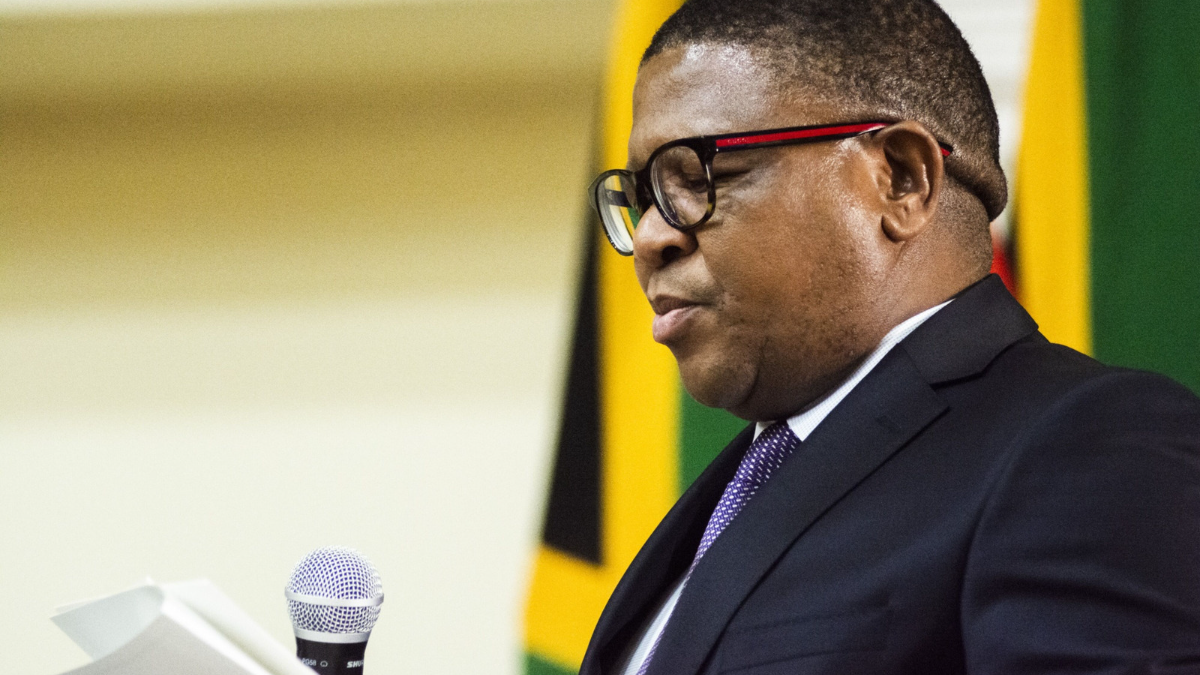By David O’Sullivan
It’s a relief that Bok coach Allister Coetzee hasn’t overreacted to last week’s disastrous performance against Ireland at Newlands and has made only one change to his side for Saturday’s second Test at Ellis Park based on choice – Ruan Combrinck is on the bench. The other changes were the result of injury. Pat Lambie and Lood de Jager are out, Elton Jantjies and Pieter-Steph du Toit move off the bench, and Morne Steyn and Franco Mostert come in.
The coach is correct in saying these players can do the job and deserve another opportunity.
There was an expected and understandably negative reaction to the first Test defeat, especially as the Boks couldn’t outmuscle a 14-man Ireland for two-thirds of the game. The historic Springbok dominance over Ireland at home was a source of pride, shattered after the Newlands debacle.
Going back in Springbok history, we’ve seen the selectors panic. Remember the clear-out of players during the British and Irish Lions’ tour in 1974? Over 40 players were selected over the course of the four-Test series, with calamitous consequences. South African rugby is no stranger to over-reaction when the team slumps. We seem to have learnt from that lesson.
Two weeks ago, I was impressed at the level of sober-minded debate about the Springbok squad. It lacked the usual vitriol and antagonism and reflected an acceptance that Allister Coetzee had picked in-form players deserving of their place in the squad.
One embarrassing defeat later, and the mood has changed somewhat. Some fans are storming the ramparts, decrying the impact of transformation. The undercurrent view is that the Bok team carries too many players because of political influence.
This makes little sense when considering how many team stalwarts had shockers and how many tried-and-tested players couldn’t raise their game. In the Newlands Test, we had the unusual sight of a stumbling, bumbling Duane Vermeulen, usually the rock in defence and the pile-driver in attack. We were aghast at the lack of penetration of the mercurial Damian de Allende and the ineffectiveness of the indomitable Eben Etzebeth.
There were some exceptions. Debutante Faf de Klerk’s speed of delivery and incisiveness behind the scrum were impressive. Siya Kolisi and Pieter-Steph du Toit were singled out by Ireland’s coach Joe Schmidt as players who made an impact – Kolisi for “really knocking players back” and Du Toit for his athleticism.
Inevitably, a conversation about the Springbok team becomes a conversation about transformation. In this highly charged political environment, there’ll be a check on the racial composition of the team.
The problem with the conversation about transformation is that it’s a complex one. It can’t be done superficially. It requires a fair degree of analysis and debate before it starts making any sense.
The conversation tends to happen on social media, where scrutiny, analysis and nuance have no place and are hardly ever regarded as essential to an informed opinion. The to-and-fro of views often occurs in a caps-locked, racially-charged, inflamed, abusive environment. Opinions are reduced to 140 characters or less, six of which are usually exclamation marks, and a further six are FFS and WTF. Any sense of context or depth is lost, and the debate goes nowhere.
That’s not to say people shouldn’t have an opinion about these things. They absolutely should. But opinions should be considered, reasoned and based on fact. It’s too simplistic to argue that South African rugby is bad because the government dictates how many black players must be in the team. It’s too simplistic to argue that rugby is a bastion of white privilege with no place for black players. The debate about transformation in sports is much more complex than these stand-alone racially-charged assumptions.
There are reasons to get angry about the lack of transformation in rugby. Sports administrators have spoken about the need to develop their sports at a grassroots level for as long as this has been an issue. Their inability to produce results is galling.
The Sports Minister is frustrated with the slow pace of transformation but bewilderingly unable to lead the way. Instead of forking millions to bring a wife-beating boxer to the country to bask in his reflected glory, instead of forking millions on an overly lavish and financially wasteful annual sports awards function, the Minister should focus on making more public funds available for development programmes. The private sector can play a role, but the Government can set an example.
If we take a couple of pages from the Icelandic football team’s playbook, we might be able to address the issues. Here’s a team of supposed no-hopers who have not only qualified for the European Championships but have held the powerful Portugal to a one-all draw. Among the reasons for their success is their investment in their coaches, players and facilities. It’s a no-brainer. Why don’t we do that better?
NEWS: Allister Coetzee has revealed that there's a fines system in place at the #Springboks. https://t.co/LfHG8MiN2E pic.twitter.com/lvwwPGNZ7O
— SA Rugby magazine (@SARugbymag) June 16, 2016
If ever there was a place to exact revenge on the Irish, it’s at Ellis Park. There’s something about the stadium that strengthens the resolve of the Boks and weakens the spirit of the opposition. Who knows why Ellis Park has this effect – is it the rarified Highveld atmosphere, the passionate fans, the psychological impact of knowing this is where the mighty All Blacks are often vanquished? Ellis Park might be just 36 years old, but it imbues the character of the old mining town that was once Johannesburg – gritty, combative, uncompromising. Whatever – as long as the Irish are suitably intimidated, the Boks are suitably fired up and the fans are suitably loud and passionate.


